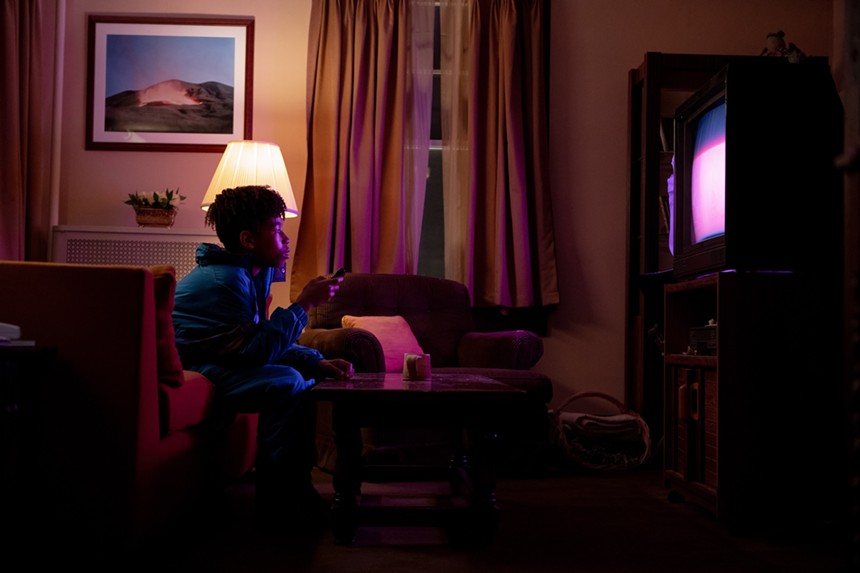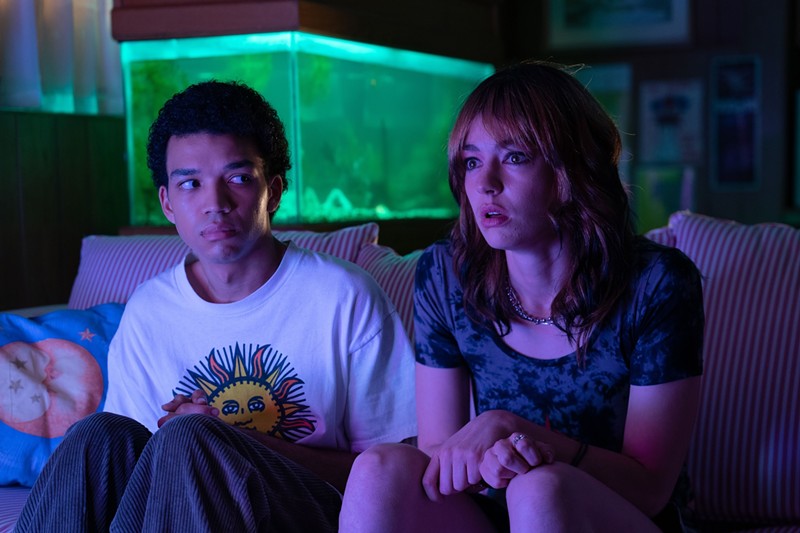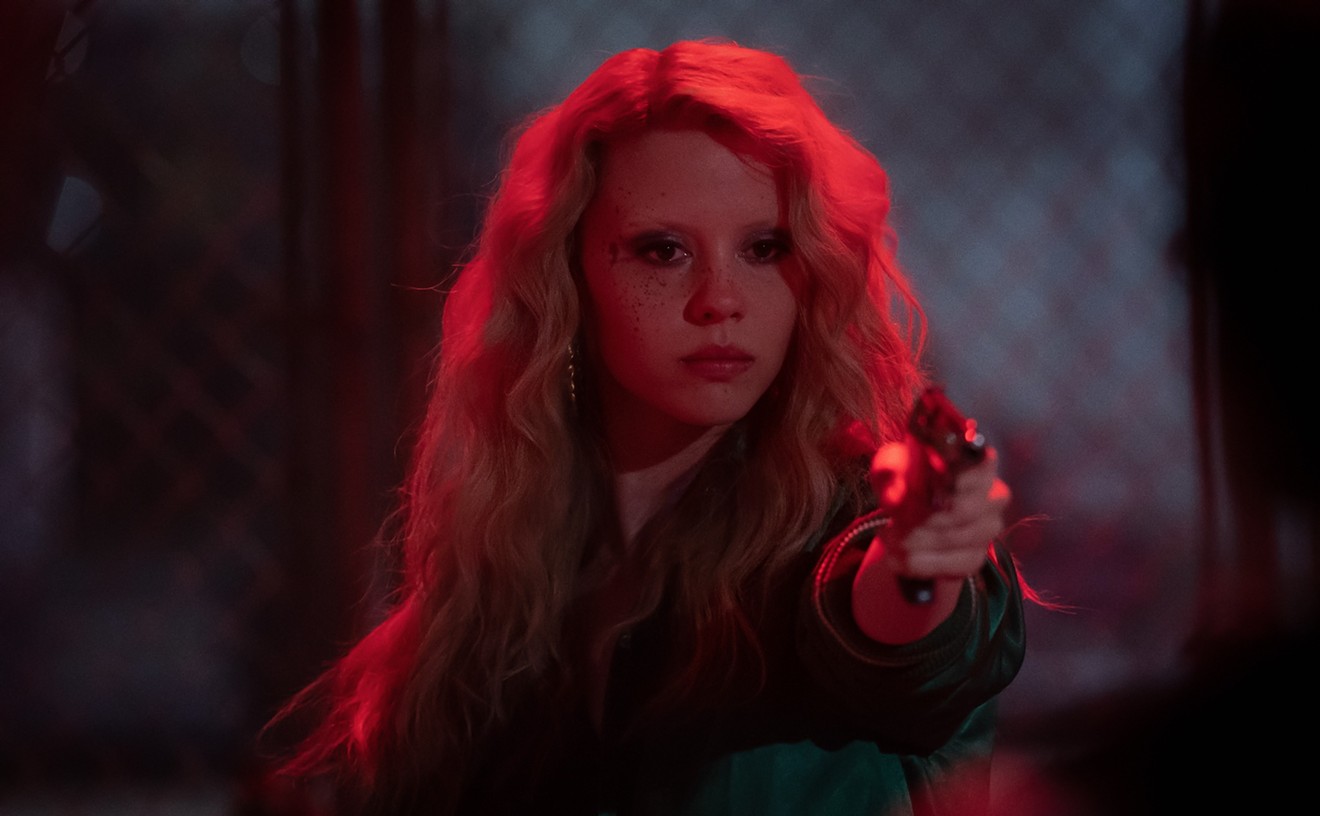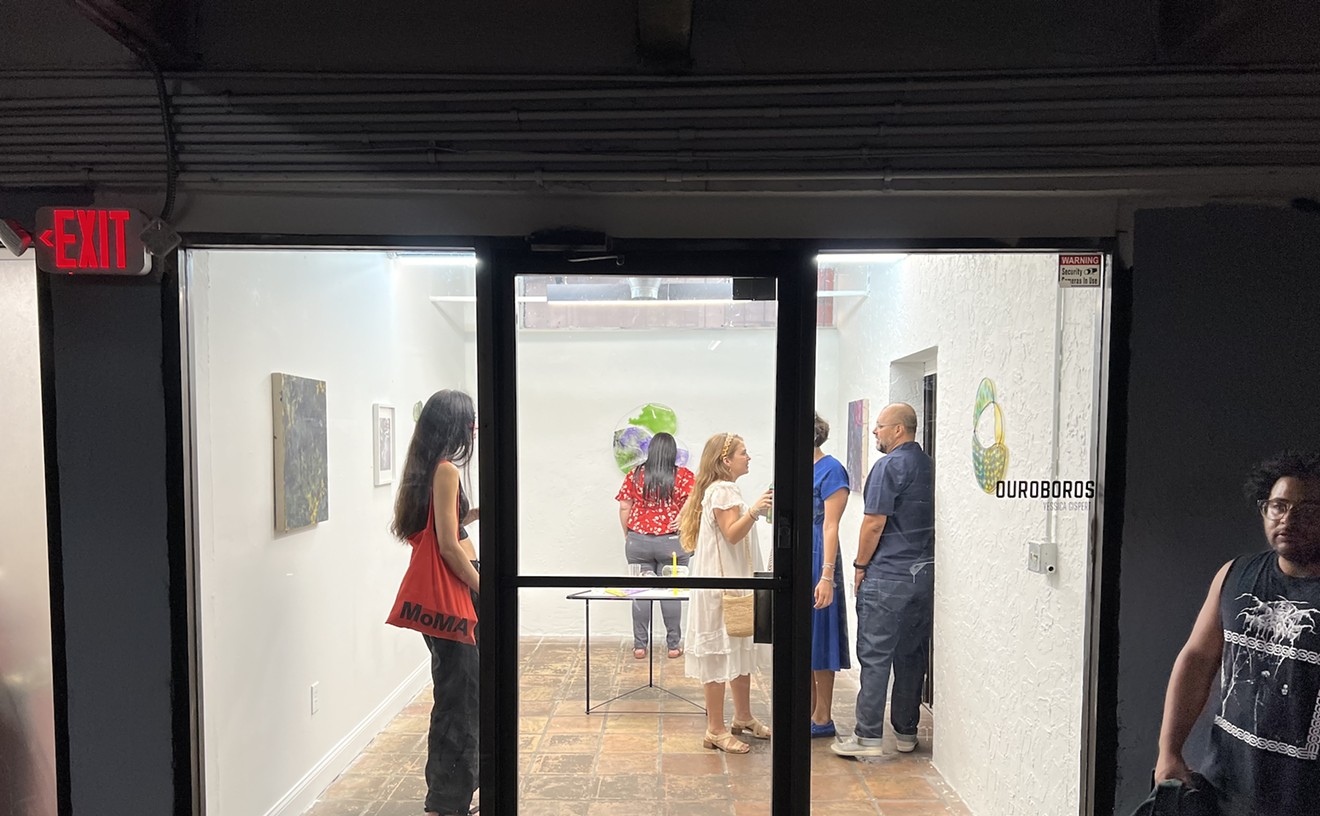Mostly, however, it's about a boy — or rather, it's about Owen (Justice Smith), a suburban teenager in Anytown, U.S.A., in the late '90s who doesn't quite know what they are or why they are the way they are. Owen is quiet and nervous and takes pains when speaking to others. When he does open his mouth, he speaks in a reedy, high-pitched voice that's forced and unnatural for a young man. His mother (Danielle Deadwyler), who drives him everywhere and assigns him a strict bedtime even in high school, wonders why he always seems like his mind is elsewhere.
Owen has one friend, Maddy (Brigette Lundy-Paine), a surly, punkish girl two grades above him. Maddy has friends but will later lose them because they don't like that she's a lesbian. He meets her one day at school, a place called Void High, where the walls are painted with messages like "Pain is weakness leaving the body." She's reading about a mysterious TV show, The Pink Opaque, about a pair of teen detectives, Isabel (Helena Howard) and Tara (Lindsay Jordan). The duo uses psychic powers to fight rubber-suit monsters of the week in order to protect the world from Mr. Melancholy, the Man in the Moon, which Owen refers to in TV tropes-speak as the "Big Bad." Owen's bedtime prevents him from watching the show, so he sneaks over to Maddy's house to view an episode. Then she starts taping it for him. The two bond over the show; their clandestine communication via tapes and notes mirrors the psychic link of the TV characters.
That bond is soon tested. Both Owen and Maddy have trouble at home. Owen's mother has cancer, and his father (Fred Durst) is distant. He chides his son for watching a show "for girls" — Owen hides the tapes in response. Maddy's father, it's implied, is physically abusive. She plans to skip town, and as they watch one last episode together, she tries to convince him to come along. She draws the symbol of The Pink Opaque on the nape of his neck, an act redolent with sapphic undertones and unsaid desires. The supernatural world of the show begins to manifest. In half-remembered flashbacks later in the film, shot out of focus, they play dress-up as the characters — the stunted, awkward boy changing into an alluring, enigmatic girl. Maddy knows what Owen really is and that the complexity at the heart of his being is something that will never be resolved in the dull, stifling town.
But Owen can't reckon with any of it. His fear makes him stay in the town, and after The Pink Opaque gets canceled on a frightening cliffhanger ending Twin Peaks-style, Maddy burns her CRT TV set and disappears. A decade later, she returns with a meaningful new name. Maddy has seen things and learned things. She explains to Owen where she's been, why the years feel as if they've passed in an instant, and why the real world feels so unreal.Owen's search for identity, or lack thereof, forms the crux of I Saw the TV Glow.
tweet this
Here, I feel, is a good place to elucidate something: Owen is transgender. He either doesn't realize it or is in denial about it, but he is, and his search for identity, or lack thereof, forms the crux of the film. Schoenbrun has been very explicit about this in interviews, declaring the film an extended metaphor for the realization that comes from seeing one's true self reflected in media — the "egg crack," as she calls it. Trans people in my life have spoken to me of having similar experiences.

I Saw the TV Glow is fundamentally about building empathy for those who do not conform to gender norms.
A24 photo
In the end, Owen's decision not to leave with Maddy comes to haunt him, and here we see the true horror of I Saw the TV Glow. Owen settles into deadening suburban conformity, working dead-end jobs at movie theaters and a "fun center" with arcade games and ball pits. His asthma worsens — the town literally suffocates him. He streams the old show on a new flat-screen TV — the magic has been lost in high definition. Smith's astounding performance really takes off in these waning stretches. He wears the unbearable burden of being a walking contradiction on his face like a Japanese noh mask, prematurely aged and frozen in a fishlike frown by his own aching loneliness and dissatisfaction. He stalks the Fun Center like a husk; his soul, imprisoned in a body not meant for it, has already died.
Through Owen's suffering, Schoenbrun transmits the film's urgent message: Find yourself or be lost forever.
I Saw the TV Glow. Starring Justice Smith, Brigette Lundy-Paine, Helena Howard, and Fred Durst. Written and directed by Jane Schoenbrun. 100 minutes. Rated PG-13. Premieres Friday, May 17. Check for showtimes at miaminewtimes.com/miami/movietimes.













